Shevlin Sebastian's Blog, page 94
March 8, 2016
To have impact at Mrs. World, Iris Maju (Mrs. India), opts for kalaripayattu
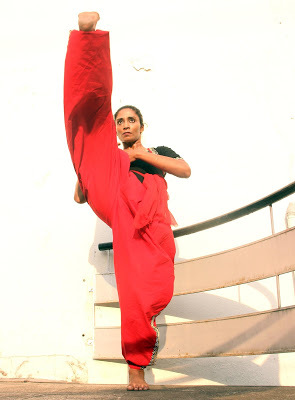
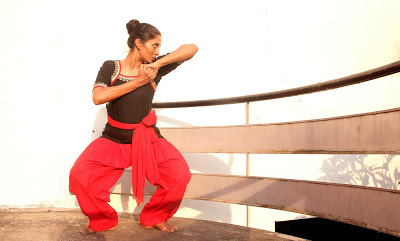 By Shevlin Sebastian
By Shevlin SebastianPhotos by Melton Antony
At 5 p.m., on most evenings, Iris Maju, 37, arrives at the Bal Bhavan in Panampilly Nagar, Kochi. In the large hall, she starts to stretch her arms and legs. Soon, under the guidance of Sivan Gurukal, of Sree Agasthya Kalari, she leaps up and kicks with her right leg. Owing to the high humidity, perspiration drips down her face. For the past three months, Iris has been training in kalaripayattu. And there is a specific reason for it.
For the Mrs. World competition, on March 12, at Dongguan, China, Iris is representing India, after she won the Mrs India competition, at Pune, in September, 2015 . “For the talent competition, I wanted to do something different,” she says. “Since kalarayapayittu is a martial art of Kerala, I want to take it to the international platform, with the message on how women can protect themselves.”
There is a myth that kalari is only about using weapons. In fact, you can use a dupatta, and with the right kalari technique, you can protect yourself from attack. “You can also use the umbrella, like a stick, poking and hitting the attacker,” says Iris. “The ladies bag is a weapon, too. Learning kalari is also beneficial for one's health. It relaxes the mind, strengthens the abdomen, as well as the lower parts of the body.”
During the day, Iris is practicing wearing the gown. This is of a metallic gold colour, with an intricate handwork on the sleeves and train. This has been sponsored by the Kochi-based designer Priya Varma. Iris will also be wearing a traditional hand-woven Kanjeevaram saree, which is being sponsored by Beena Kannan of Seemati. “It has peacock and mango symbols,” says Iris. “Peacock is the national bird, while mango is the national fruit.”
Iris will also highlight the fact that she is a green activist. “Cycling is my way of supporting a green environment,” says Iris, who cycles 15 kms a day. The wife of a Shillong-based Army colonel, Maju Joseph, Iris has done a lot of social service through the Army Wives' Welfare Association. “I have conducted English-speaking courses and taught bag-making to the wives of jawans,” she says.
And for Women's Day, Iris has a message. “Most women in Kerala give up too easily on their career options and do not take care of their health,” she says. “My message to them is simple: go out and pursue your dreams. There is nobody to stop you except yourself.”
(Page 1, New Indian Express, Kerala editions)
Published on March 08, 2016 21:18
March 6, 2016
Being And Nothingness
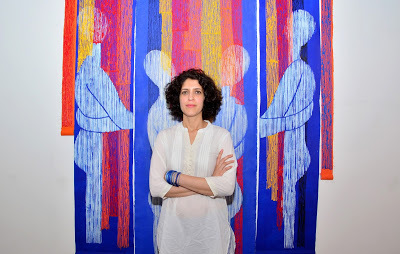 The New York-based artist Jayanthi Moorthy, at her first solo exhibition in Kochi, focuses on loneliness as well as the need to be part of a community
The New York-based artist Jayanthi Moorthy, at her first solo exhibition in Kochi, focuses on loneliness as well as the need to be part of a communityPhoto by Ratheesh Sundaram
By Shevlin Sebastian
The New York-based artist Jayanthi Moorthy felt her heart thud against her rib cage. On the morning of October 27, 2012, Hurricane Sandy had hit with devastating force, bringing in its wake fierce winds and rain. Jayanthi immediately wondered whether her 12 ft. high painting, 'Wisdom', which was part of an outdoor installation, at The Jacques Marchais Museum of Tibetan Art, in Staten island, would survive.
But survive, it did. Three-and-a-half years later, at the OED Gallery at Mattancherry, Jayanthi looks up at the work, hanging on the wall, and says, with a smile, “It was amazing the way the canvas withstood the hurricane. Knowing that it would be outdoors, I had put several coatings of paint.”
Indeed, the work, 'Wisdom', looks as good as new. It shows a nude man and woman, placing their hands around each other’s waist. “When there is limitless love between two people, it is then that you understand the wisdom of being together,” she says.
Jayanthi's first exhibition in India (February 13-26) is called 'Together Alone'. And there was a reason behind the title. “Whenever I would come to India I wanted to be part of a community,” she says. “But after a while, I felt a yearning for solitude. I see this mixed reaction with a lot of people.”
This aspect can be seen in a striking work which has 12 small canvases. On one is written, 'Me' and on the other is 'You'. It is placed in the shape of a Y on the wall. So the 'Me' and 'You' start from far away and intersect at the bottom. “Two strangers meet and then sparks fly and they end up being together,” says Jayanthi. “At the same time, if you look from the bottom upwards, they can also end up going away from each other.”
In another work, a faceless woman, in a red saree and purple blouse, is making a garland of flowers. This garland is real and sticks out from the painting. All across the painting is the Sanskrit sentence: 'Karmanye Vadhikaraste Ma Phaleshu Kadachana (Work is worship)'.
Three years ago, Jayanthi had seen several women making garlands in a market in Chennai. “Something about the activity was so beautiful,” she says. “They were smiling, while doing their work. Sometimes, people get themselves into a routine to be free from thought. On the other hand, when you do routine work, it makes you calmer and fulfilled. It could be a meditative experience.”
What is unusual about Jayanthi's works are the threads of paint that run through the canvas. This has happened because of her unique method of painting. She puts paint in cones of plastic paper, and squeezes it out. Thereafter, she uses her hand, instead of a brush, to draw the image. As a result, the paint looks like single threads. “I am obsessed with lines,” she says.
As for the lines in Jayanthi's life it runs like this: born in Kolkata, she grew up in Kochi. After her graduation, in commerce, she moved to Chennai where she worked for several years in design, animation and digital media. Then, in 2004, she met Sri Kaushik, a New-York based professional, fell in love, got married, and moved to the United States. And it was while there that she became a full-time artist.
Meanwhile, at Mattancherry, people were enjoying the interactive installation, ‘What is your worst fear?’
On the floor, Jayanthi has done a drawing, of lines, in black and white, using charcoal and rice flour. “Black represents darkness while white is the light,” she says. In the middle is a circle of unlit terracotta lamps. “These black lamps, found in temples, can contain your fears,” she says. “And when you light them, your distress is overcome.”
Next to the work is a wooden box, where you can write your worst fear on a piece of paper, fold it, and slide it through a narrow opening. Later, these worries are projected on the ground, as sentences, which move from one side to the other. The fears include, ‘Not being interesting’, ‘being lonely’, ‘losing a loved one’, ‘taking risks’ and ‘the human capacity for cruelty.’
Published on March 06, 2016 21:49
March 3, 2016
Of Dud Artillery Shells And Bomb Blasts
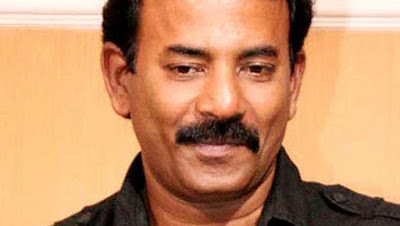
 COLUMN: LOCATION DIARY
COLUMN: LOCATION DIARY Photos: Major Ravi; Mohanlal in 'Keerthi Chakra'
It was a cold morning in March, 2006. In the village of Magam, Major Ravi sipped a cup of tea, while an unit member of the film, 'Keerthi Chakra', brought him the day's English newspaper. Major Ravi was taken aback when, on the front page itself, he saw a news item: 'Major Ravi is back in Kashmir. But this time, he does not have a AK-47. Instead, he has a camera.'
Major Ravi felt worried. “Usually, these newspapers are read by militants,” he says. “So, this meant that they knew we were there.”
“We put cameras at four points,” says Major Ravi. One camera was just ten metres away. Major Ravi stood next to the soldiers as they fired a round. The shell, instead of travelling a distance of one kilometre, fell two feet away from the camera.
So Major Ravi asked for a petrol bomb to be placed inside. “I told the Tamil workers to put six litres of petrol,” says Major Ravi. Two cameras were placed at strategic positions. However, when the bomb burst, there was a huge sheet of fire. Two crew members got injured, while a young actor called Shaan, who played a commando, has his entire hand burned. He was rushed to hospital.
“One crew member told me that he saw the Tamilian running, at full-speed, by the side of the highway towards Vytilla,” says Major Ravi. “Three days later, he returned, grabbed my legs, and begged forgiveness. By then my anger had cooled down. Nevertheless, I warned him never to do such dangerous mistakes again.”
(The New Indian Express, Kochi, Thiruvananthapuram and Kozhikode)
Published on March 03, 2016 21:13
March 1, 2016
Doubling Her Impact
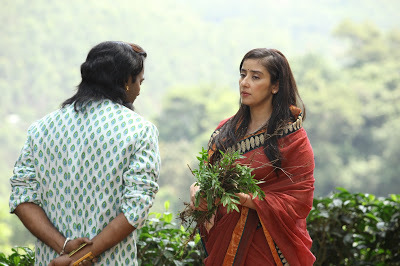 Bollywood actress Manisha Koirala plays a double role in the Malayalam film, 'Edavapathi'
Bollywood actress Manisha Koirala plays a double role in the Malayalam film, 'Edavapathi'By Shevlin Sebastian
When director Lenin Rajendran approached Manisha Koirala to play a double role in his Malayalam film, 'Edavapathi', the latter agreed, but on one condition. She would come to the set, with full make-up, at 9 a.m., and return to the hotel by 7 p.m.
Rajendran agreed. However, on the first day of the shoot, Rajendran told her, “I usually work from 7 a.m., and finish at 9 p.m.” A smiling Manisha sportingly agreed. “To my surprise she was on the set every day at 7 a.m.,” says Rajendran. “And, on some days, when the shoot was extended till midnight, during a chilly period in Munnar, Manisha never complained.”
‘Edavapathi’ (Map of Tears and Blood), which will be released on April 1, is about the lives of the Tibetans, who have a large settlement in Bylakuppe, Karnataka. Rajendran had spent a few days there some years ago, and had been moved by their plight.
“I realized that although they have been living in India for 57 years, their hearts are in Tibet and, more specifically, in the capital, Lhasa,” says Rajendran. “This feeling was there even among those who have never been to Tibet.”
Manisha plays the wife of an estate manager, who abandons her, and she has to bring up her daughter on her own. Along with the main theme, there is a parallel story about Vasavadatta, a renowned dancer during the time of Lord Buddha, which is based on a poem by legendary Malayali poet Kumara Asan.
“Manisha plays the mother of Vasavadatta,” says producer Ravi Shankar.
Asked about her preparations, Manisha says, “Rajendran Sir had a clear idea about the looks, costume, jewellery and hairstyle of Vasavadatta's mother. I followed to the letter whatever he told me to do. The other role was about a modern-day woman in a broken marriage. That was easy for me.” Adds veteran cinematographer Madhu Ambat, who worked in the film, “Manisha was able to bring out the emotions of the characters very well.”
One reason for her good work is that Manisha enjoys working in the South. “I have always admired the strict discipline on the sets,” says Manisha. “I remember when I did 'Bombay' with [director] Mani Ratnam, one day the shoot was fixed at 4 a.m. And everybody was ready and shooting began on the dot.”
Meanwhile, 'Edavapathi' is a comeback of sorts for Manisha, following her successful two-year battle against ovarian cancer. And it has changed her as a person. “It has made me realise that life is short,” she says. “I now take joy in the simple things in life. And, as an actor, I am hoping that the difficult experiences I had while fighting cancer will reflect in a better quality in my work.”
That is likely, since Manisha has always been known as a good actress. Asked for tips to pass on to aspiring actors, Manisha says, “An upcoming actor should watch a lot of plays and films. He should become aware of different acting styles. To do well, actors need passion, dedication and focus. My grandmother also told me that one should always work from the heart. This will enable you to become the best you can be.”
(Sunday Magazine, The New Indian Express, South India and Delhi)
Published on March 01, 2016 21:31
February 29, 2016
Making Things of Beauty
 Rumana Jaseel's intricate cake designs have received international appreciation
Rumana Jaseel's intricate cake designs have received international appreciationPhoto by Ratheesh Sundaram
By Shevlin Sebastian
Rumana Jaseel, 37, felt a moment of tension as she watched the legendary singer Yesudas tuck into a cake she had made. The occasion was Yesudas’ niece’s wedding at Tiruvalla. After he ate it, Yesudas said, “I have eaten cakes everywhere, but I have not eaten one as tasty as this.” The flavour was banana walnut, while the decoration was pink and white icing, with flowers. “I felt thrilled when Yesudas said that,” says Rumana.
She has been going through other thrilling moments. In November, 2015, Rumana was a finalist in the wedding cake category in a competition organised by the UK-based Cake Masters Magazine. This is regarded as the Cake Oscars. “There were 64,000 participants from all over the world,” says Rumana. “This number was winnowed down to four finalists in 15 categories.”
Some of the categories included the Royal Icing Award, the Cupcake Award, Sugar Flower Award and Wedding Cake Award.
The selection was done online based on the photos sent by the artist. “Cake designing is more about the looks,” says Rumana, who runs the ‘IncrEDIBLE Art – Artisan Cake Boutique’ in Kochi. “If it is a wedding cake, they look for the elevation, the arrangements of the flowers, the colour combinations and the perfection of the work.”
At the awards ceremony, at the National Exhibition Centre, in Birmingham, Rumana was able to meet the Indian-origin editor, Rosie Mazumdar, who said, “You have no idea how close you were to winning.” The eventual winner was Faye Cahill from Australia.
Asked the secret to making good cakes, Rumana says, “People look for flavour and visual appeal.”
To ensure she gets a good result, Rumana works closely with her customers. Kerala State Finance Minister KM Mani’s granddaughter Shruti wanted an aqua-coloured cake, for her engagement, to match the theme that she had on the stage at the Le Meridien hotel, Kochi. So Rumana made a cake with a dolphin ring on top that looked like a wedding ring, and the five-tier cake ran on a gradient from the lightest to the darkest shade of blue. “This represented the colours of the ocean,” says Rumana.
For the wedding reception of Mollywood star Meera Jasmine, she made an English-style cake. “I used pearls, vintage-looking flowers and pastel shades,” says Rumana. “Meera liked it a lot.” Incidentally, her prices start from Rs 1500 per kilo and goes up according to the intricacy of the design.
Customers are fulsome in their praise. “Rumana is an incredible cake artist,” says Susheela Stephen, who runs ‘Supermomskitchen’, a food and grocery store at Kumily, Kerala. “God has blessed her with talent and patience. All her cakes are perfect. And the finish is beyond words.”
But Rumana’s secret passion is for French pastries, which she has been making since 2009. “The demand is not high at Kochi as people still prefer the fresh cream style,” says Rumona. “I want to make them aware that pastry is not only about fresh cream cakes. There are so many tasty products that can be made using fresh and natural ingredients.” So, instead of chocolate loaded with hydrogenated fat, Rumana uses pure chocolate, and almond flour, instead of refined flour.
To increase her knowledge, last November, Rumana attended a masterclass at the Asian Pastry Forum in Kuala Lumpur. It was conducted by Stephane Glacier, who is one of the highest-ranked pastry chefs in France. “Doing the course was such a good experience,” she says. “I got some important tips.”
And Rumana generously passes on these tips during her regular classes in Kochi, as well as a recent one, at Bangalore, where she taught the Advanced European desserts workshop. And the participants were happy. Says Anita Pradeep: “I could not take my eyes off those beauties. I can well imagine the time and energy and love Rumana gives to each one of them. God bless her.”
(Sunday Magazine, The New Indian Express, South India and Delhi)
Published on February 29, 2016 23:12
February 28, 2016
The Lights of Benyamin
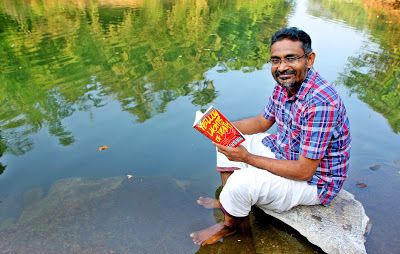
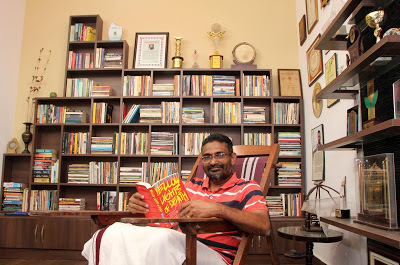 The Malayali author's novel, 'Yellow Lights Of Death', is a murder mystery, a far cry from his best-selling 'Goat Days'
The Malayali author's novel, 'Yellow Lights Of Death', is a murder mystery, a far cry from his best-selling 'Goat Days'Photos by Albin Mathew
By Shevlin Sebastian
In 1502, Andrew Pereira, his wife Catherina, and son Diego embarked from Portugal, in the company of the famed explorer Vasco Da Gama and reached Kozhikode. Thereafter, Pereira decided to settle down in Kochi.
Initially, the King of Cochin appointed Pereira as a treasurer and later, as the chief trainer of the Army. Following the death of Pereira on January 9, 1520, his son Diego was given the same positions. In 1545, the King made Diego a 'Madambi' (a local chieftain). And he was the only Christian among 71 Madambis.
The Andrappers [a corruption of Andrew Pereira] married Portuguese women, but in 1786 Kochandy Andrapper married a local woman called Anna. It was then that the integration of the family to Kerala became complete. Over the years, some members moved to Pondicherry, Diego Garcia and Africa.
In 2005, Benyamin read, with rising excitement, the family's history in a Malayalam magazine. This became the spark behind the novel 'Manjaveyil Maranangal' or 'Yellow Lights of Death', which has just been published in English by Penguin Books.
In the novel, Benyamin does a fictional exploration of the history of the family. He also writes about the history of Kerala in the past 500 years, including the life of Thoma of Villarvattom, the head of India's only Christian dynasty in Udayamperoor.
At the same time, the book is a murder mystery. A killing in a restaurant in Diego Garcia sets in motion a series of events that has the reader gripped. “I had deliberately written a thriller, because I did not want to repeat myself,” says Benyamin, at his home in Pathanamthitta. “In every book, you should try a new style, theme and story.”
Benyamin's earlier book, 'Goat Days' (‘Aadujeevitham’) had been a big bestseller. It tells the story of a shepherd who lives like a slave under a cruel landlord at a farm in a desert at Saudi Arabia. “'Goat Days' was liked by many ordinary people, because it is a simple book,” says Benyamin. “Anybody could understand it. But 'Yellow Lights' will not be accepted by all.”
Nevertheless, the book has done well. Publication Manager AV Sreekumar of DC Books, one of Kerala's leading publishers, says, “The Malayalam version has already crossed 50,000 in sales. We are very happy.”
Interestingly, Benyamin says that the Malayalam edition has got a new readership. “The young generation has embraced this novel,” he says. “One reason is that I have written about social networks and other contemporary subjects.”
One great attraction about 'Yellow Lights', ably translated by media person Sajeev Kumarapuram, is the clear and lucid writing. Benyamin says that it is a deliberate decision. “This is the only way to lure people, who are hooked onto the visual media, to start reading,” he says. “The era of literary gimmicks is over. We have to attract a reader within the first five pages, otherwise we will lose him or her forever.”
Benyamin would feel the loss of readers since he is a full-time writer. Two years ago, he gave up a job in Bahrain, after working there for twenty years, and returned to Kerala.
Asked about his current life, Benyamin says, “It is much more pleasant being a full-time writer. For one I can devote more time to literature. Secondly, it has become easy for me to travel, as I am not working for anybody. I am able to attend a lot of literary meets in Kerala, and abroad.”
In November, last year, Benyamin went to attend the annual conference of the Literary Association of North America in New York. “The drawback is that there are a lot of literary meets which take place, and it is difficult to say no,” he says. “But truly the writer should be always at his desk writing.”
Today, Benyamin is doing research for a historical novel which will be set in Central Travancore, from the 1970s to the 90s. “For me, research is a basic tool of writing,” he says. “It is necessary to have historical supports for a novel.”
(Sunday Magazine, The New Indian Express, South India and Delhi)
Published on February 28, 2016 21:44
February 26, 2016
Ways And Means To Get Better
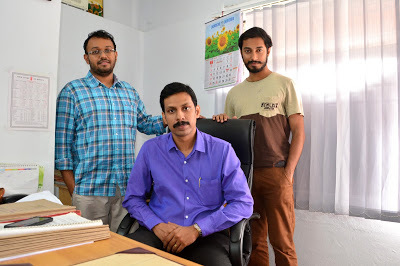 Members of the Kerala Urban Development Society offer their suggestions for the improvement of KochiPhoto: (From left) Sooraj Sasikumar, Anup Joachim and Kenny P Joy. Pic by Ratheesh Sundaram (The New Indian Express, Kochi, Thiruvananthapuram and Kozhikode)
Members of the Kerala Urban Development Society offer their suggestions for the improvement of KochiPhoto: (From left) Sooraj Sasikumar, Anup Joachim and Kenny P Joy. Pic by Ratheesh Sundaram (The New Indian Express, Kochi, Thiruvananthapuram and Kozhikode)
Published on February 26, 2016 21:43
February 24, 2016
When Everybody Said It Was Bad Luck
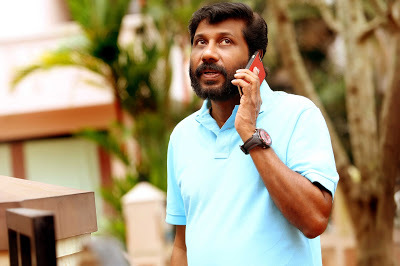 LOCATION DIARY
LOCATION DIARY Director Siddique talks about his experiences on the film, 'Godfather'
By Shevlin Sebastian
Director Siddique felt nervous. Crew members of the film, 'Godfather' (1992), had told him that to start a shoot on a Sunday would bring bad luck. When he informed this to the producer, Swargachitra Appachan, the latter told his long-time astrologer, “Many films, which began their shooting on Sunday, had become flops. So, should we avoid it?”
The astrologer was adamant that there was nothing wrong in filming on a Sunday. “We believed in him,” says Siddique. “For our hit films, like ‘Ramji Rao Speaking’ and ‘Harihar Nagar’, he had given us the auspicious time to start shooting.”
So, the crew gathered at Kozhikode on Sunday, August 18, 1991. Only actor Mukesh was present. Initially, Siddique was planning to do some outdoor scenes with the star. But the omens were not good. It began raining so heavily, that there was no chance to do any shooting. “In fact, the streets had become flooded,” says Siddique. “The weather forecast said that it would rain for another four days.”
So, they went in for an indoor shoot at the government guest house on West Hill. Later, at Kappad beach, the song, 'Pookkalam Vannu Pookkalam', sung by Unni Menon and KS Chitra was picturised with Mukesh and Kanaka. “Again we were told that whenever songs were shot at Kappad beach, the movie flopped,” says Siddique. “But we ignored it. Then we went to the top of a nearby hill, which is a familiar spot for film-makers. This was also a place which had a lot of bad luck. On top of that, the shoot was on a Sunday, too.”
On Kanaka’s last day, thereafter, she was scheduled to act in a Tamil film, the scene was supposed to take place at the government guest house. The shot shows Kanaka coming to visit Mukesh and Jagadish who are staying in a room. “But the room we were supposed to shoot in, to ensure continuity with the earlier scenes, had been occupied by a judge,” says Siddique. “The manager immediately said he can provide another room, as he could not ask the judge to move. We were in a dilemma. And did not know what to do.”
Finally, production executive Babu Shahir got up the courage and approached the judge and told him about their predicament. “The judge immediately agreed to move,” says Siddique. “Members of our crew helped to take his luggage to another room. And we could do the shooting.”
Then two days before the release date, the wife of the noted writer Muttathu Varkey filed a stay order in a court in Kottayam stating that the story was plagiarised from a work written by her husband. Somehow, Siddique managed to get the stay vacated, and released the film on time.
As is now well known, 'Godfather' became a huge hit. And it set a unique record when it ran for 405 days in Sreekumar theatre at Thiruvananthapuram.
Meanwhile the case went on for two years. “The lawyer made several attempts to reach a financial compromise, but I refused,” says Siddique. “I was determined to win, because it was a slur against my integrity.” In the end, the case was thrown out of court.
Asked about the success of 'Godfather', despite so many bad signs, the multi-hit director smiles, at his home in Kochi, and says, “The film industry has too many blind beliefs. If your mind is clean, if the road you take is straight, if you are truthful, and the script is great, then the film will do well.”
(The New Indian Express, Kochi, Kozhikode and Thiruvananthapuram)
Published on February 24, 2016 21:16
February 23, 2016
Going On And On... Brilliantly
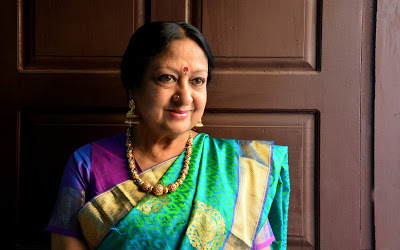 Eminent Bharata Natyam danseuse Padma Subrahmanyam enthralled an audience at Kochi with her performance on the Bhagwad Gita
Eminent Bharata Natyam danseuse Padma Subrahmanyam enthralled an audience at Kochi with her performance on the Bhagwad GitaPhoto by Ratheesh Sundaram
(The New Indian Express, Kochi and Thiruvananthapuram)
Published on February 23, 2016 20:58
February 19, 2016
Reaching Out To A Global Audience
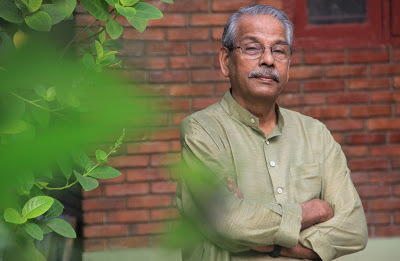
 The Malayalam author C. Radhakrishnan has brought out a few of his acclaimed novels in English: e-books as well as printed versions
The Malayalam author C. Radhakrishnan has brought out a few of his acclaimed novels in English: e-books as well as printed versionsPhoto of C. Radhakrishnan by Melton Antony
Finally, Radhakrishnan managed to escape, met a police officer in Kolkata, who, after confirming his identity, by calling the 'Patriot', provided him with clothes and money.
And, again, unusually, for a writer, he publishes the works himself through the imprint, Hi-Tech Books. But the distribution is done through well-known publishers like DC Books. “Thanks to my readers, I have been able to carry on,” says the 76-year-old.
(The New Indian Express, Kochi, Thiruvananthapuram and Kozhikode)
Published on February 19, 2016 22:40



